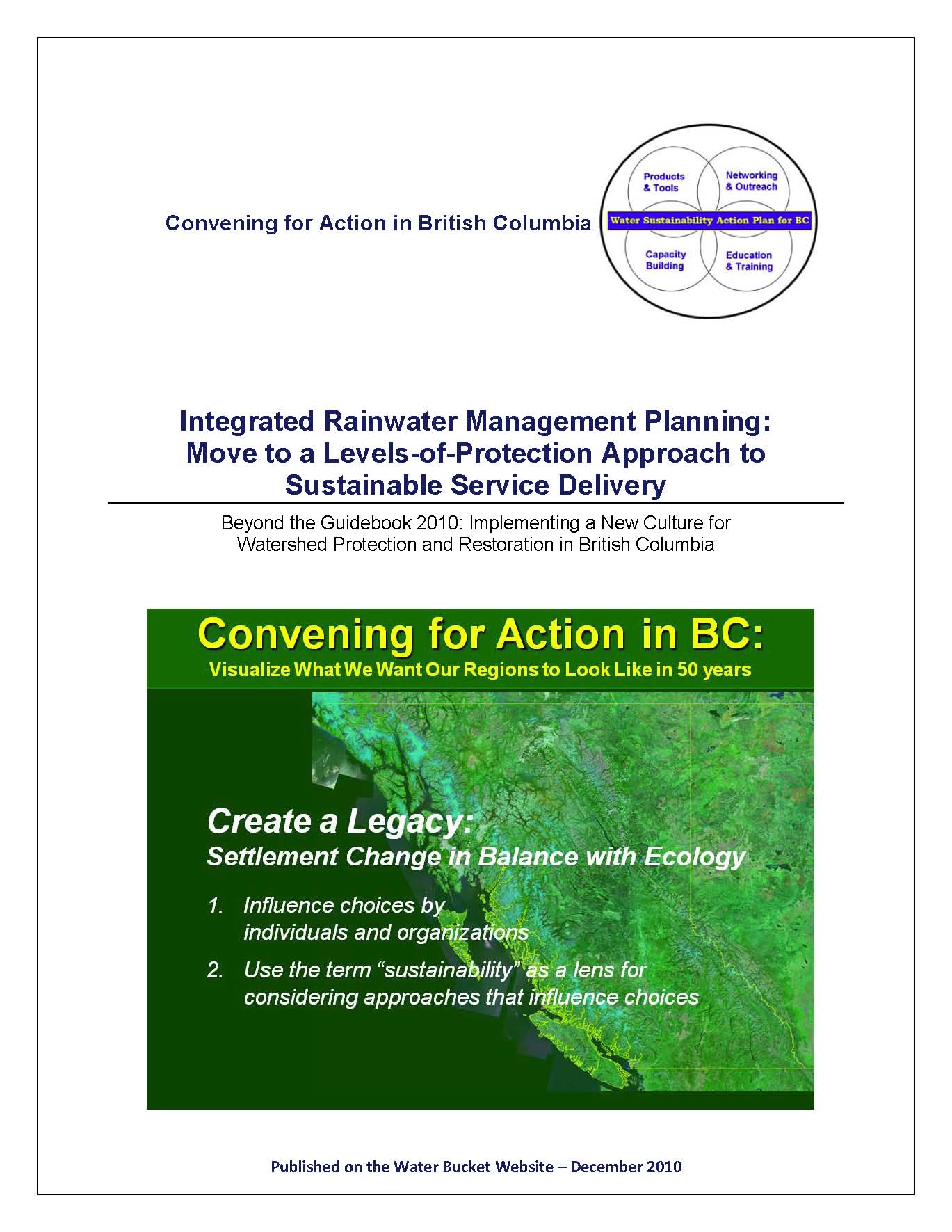Sustainable Service Delivery: Need for Local Governments to be Nimble, Collaborative and Integrated
Note to Readers:
During the November-December 2010 period, the Water Sustainability Action Plan for British Columbia released a series of five articles that are designed to inform local governments and others about a ‘course correction’ for Integrated Stormwater Management Plans (ISMPs). The series describes:
- what ISMPs are;
- how local governments can do more with less; and
- how local governments can ensure ISMPs are outcome-oriented.
The fourth in the series introduced the ‘infrastructure deficit’ as a driver for the ISMP Course Correction. It connected the dots to Asset Management as a way to re-focus the ISMP process on what really matters.
Sustainable Service Delivery Context for ‘ISMP Course Correction’
The first three installments in the series established the context for embracing a ‘regional team approach’ and making the change to IRMP (Integrated Rainwater Management Plan) from ISMP. In the fourth instalment, the spotlight shifted to Asset Management as a pathway to re-focus local governments on stream health and desired watershed outcomes.
The term Sustainable Service Delivery describes a new way of thinking about infrastructure needs and how to pay for those needs over time. The link between asset management and the protection of a community’s natural resources is emerging as an important piece in Sustainable Service Delivery.
To Learn More:
Access all five stories in the ‘ISMP Course Correction Series’ by clicking on Water Bucket publishes excerpts from “Beyond the Guidebook 2010” about why and how to re-focus ISMPs on outcomes — Outcome-oriented planning is a problem-solving PROCESS. It is not a procedure. It is not a matter of applying a regulation or a checklist. Participants have to be committed to the outcome.
Integration of Land Use and Asset Management Planning, a paper by Kim Fowler
 “Land use planning in British Columbia may be significantly improved when integrated with asset management planning in local governments,” writes Kim Fowler, Director of Sustainability for the City of Victoria (and a member of the Local Government Asset Management Working Group) in her recent paper titled “Local Government Land Use and Asset Management Planning in BC: Proposed Sustainable Service Improvements”.
“Land use planning in British Columbia may be significantly improved when integrated with asset management planning in local governments,” writes Kim Fowler, Director of Sustainability for the City of Victoria (and a member of the Local Government Asset Management Working Group) in her recent paper titled “Local Government Land Use and Asset Management Planning in BC: Proposed Sustainable Service Improvements”.
Land Use Planning is the Key Determinant
“If the necessity, goal, and best practice of asset management is an integrated approach involving planning, finance, engineering and operations effectively managing existing and new infrastructure, then how should this occur? How do local governments ensure the full service life is reached and have mechanisms to enable their replacement? And why are planners the least knowledgeable of the local government professionals about asset management when land use planning is the key determinant for infrastructure demand and servicing?”
“The legislative requirements for integration of land use planning and asset management, including financial management, are already mandated. So why is this not commonly happening?”
Need for Local Governments to Be Nimble, Collaborative and Integrated
“The accelerating pace of change in our communities will continue, requiring local governments to become much more nimble, collaborative and integrated with a long-term focus. Each local government may determine where to start based on its particular circumstances, whether that be an asset management policy or plan, corporate strategic plan or long-term financial plan but the longer these plans are delayed, the more drastic the following measures will be in order to survive financially:
- Lowering of service levels;
- Reduction or elimination of some assets;
- Challenging risk acceptance limits;
- More partnerships, particularly with private capital investment; and
- More user pay charges.”
“The change is here, and it is accelerating. Local governments have an opportunity to adapt and mitigate these changes and improve resiliency of our communities within existing legislative authority and current best practices,” concludes Kim Fowler.
To Learn More:
The foregoing is an extract. To download a PDF of the complete story, click on Story #4 in the ISMP Course Correction Series: Move to a Levels-of-Protection Approach to Sustainable Service Delivery
To read a companion story posted on the Green Infrastructure community-of-interest, click on Integrated Rainwater Management: Move to a Levels-of-Service Approach to Sustainable Service Delivery
To download a copy of the paper written by Kim Fowler, click on Local Government Land Use and Asset Management Planning in BC: Proposed Sustainable Service Improvements
Posted December 2010



